We’re back with another week of the PLV report. This series will use the PLV metrics to contextualize player performance, and this week we’ll use our PLV model (Nick’s primer on PLV from last year can be found here) to validate some early-season pitching performances. PLV allows us to dig into individual pitches as needed, or to analyze how a pitcher’s repertoire works holistically. When showing Pitch Type cards, there will also be a plvLocation+ score shown, which is modeled similarly to PLV, but only uses the end locations of the pitch (horizontal, vertical, and location within the specific hitter’s strike zone) as inputs.
Now that we’re nearly halfway into the season (2,198 out of 4,860 games, so ~45% if you’re being specific), there are a ton of pitchers past the 500-pitch threshold, which is the point in the season where PLV begins to stabilize. This is also true of their PLA, which converts PLV to an ERA scale. This week, I want to look at some of the less heralded and/or surprising performances by PLV.
Note: PLV metrics listed are current through Tuesday, June 18th.
We absolutely have to start with Mitch Spence, the #1 Starting Pitcher by PLV. He’s doing it by simply throwing his best pitch the most often. Baseball can be pretty easy sometimes.
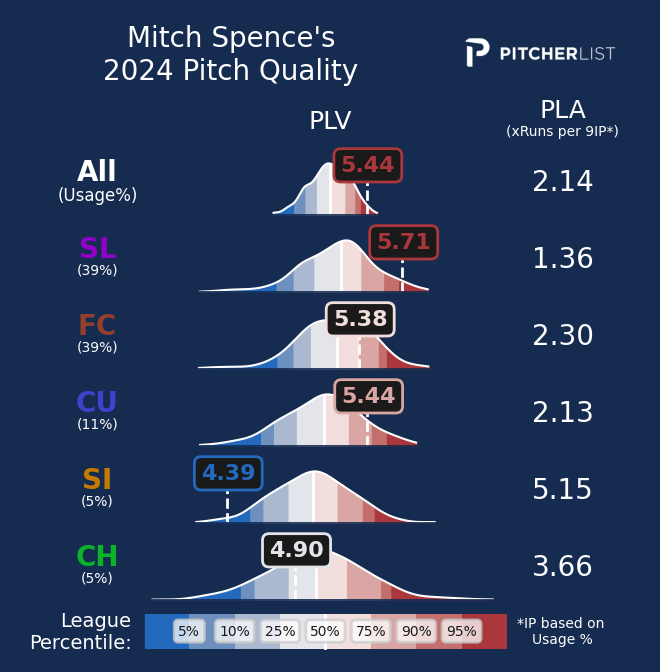
In all seriousness, I do not think that Mitch Spence is the best starter in baseball. I don’t think he’s even close, though he’s still intriguing, and he’s better than his high 3s ERA indicates. He won’t be a high-K% pitcher, but he does a good job of avoiding walks and limiting contact quality and he has a fascinating ability to draw Foul Strikes (Slider, Cutter, and Curve are all 80th percentile or higher in Foul Str%).
He’s worth a flyer in most leagues if you’re hurting for a starter (especially in QS leagues, as Oakland has let him throw 80-100 pitches in his last four starts). Oakland doesn’t have much to lose by letting him go long in games, and Mason Miller should bring home any games where Spence departs with a lead, so there could be a surprising number of wins, too. One last interesting note: Spence throws 90% of his pitches with glove-side movement. I’m fascinated to see how sustainable that approach is.
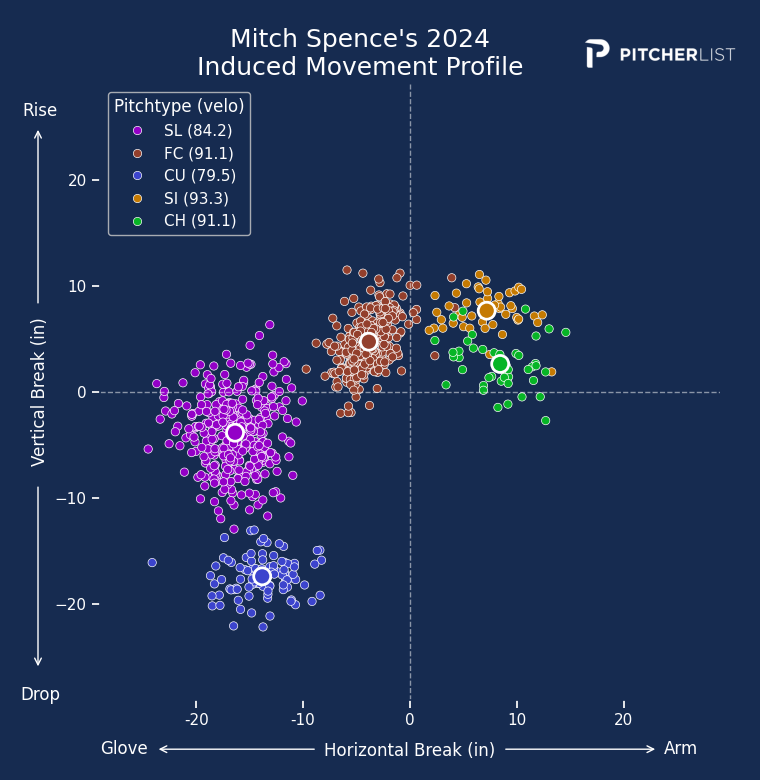
He’s easily my biggest surprise of the season because he’s balancing elite PLV numbers with a terrible CSW%. Which Pitcher List stat will win out?! Or will they both live on in a mid-to-high 3 ERA harmony?! I’ll be watching all season to find out.
Woods Richardson is another arm who didn’t have a lot of preseason hype (#318 on Nick’s Preseason Top 400 Starters) but has found a surprising amount of success. He’s doing it in a more traditional way than Spence, leading with his 4-Seam Fastball, though that’s not why he’s succeeding. The source of his success is his ability to spot his pitches impeccably. We can take a look at his Slider as an example. It is his singularly best-located pitch, though all of his pitches are spotted well (4-Seam is the worst at a 104 plvLoc+).
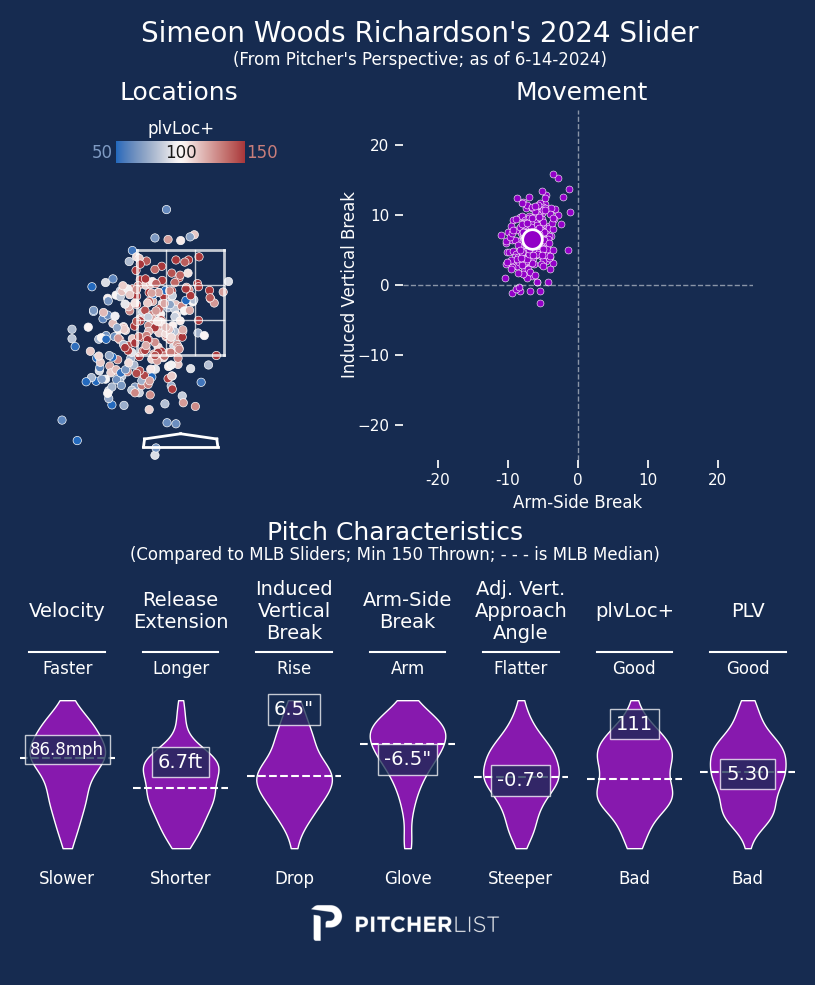
The thing that stands out right away is that even when he misses, it isn’t by much. That’s true for Woods Richardson’s entire profile: almost all of his pitches are competitive. We’re working on a stat that estimates the competitiveness of pitches thrown, and Woods Richardson is Top-5 among starters (Spence is right behind him). There seems to be a tangible benefit to throwing pitches that aren’t clear and obvious balls, and I think it’s one of the reasons Woods Richardson has succeeded so far, despite a pretty meh fastball (only 93.1mph, with bad shape). Location value can be a pretty noisy metric, so it remains to be seen if he can maintain this impeccable command all season. I know I’ll be rooting for him to do it.
I wanted to sneak in a Triple-A pitcher to show off that we have MiLB data and advanced stats now (you should sign up for PL Pro to check it out!). Joe Rock has been effective (sidenote: if a guy is traded from the Rockies or to the Rays, you know that he’s going to immediately perform well after the trade, so having them both happen at once makes it obvious that we should pay attention to Rock). He has four MLB-quality pitches right now, including a surprisingly wicked Sinker and a very useful gyro Slider.
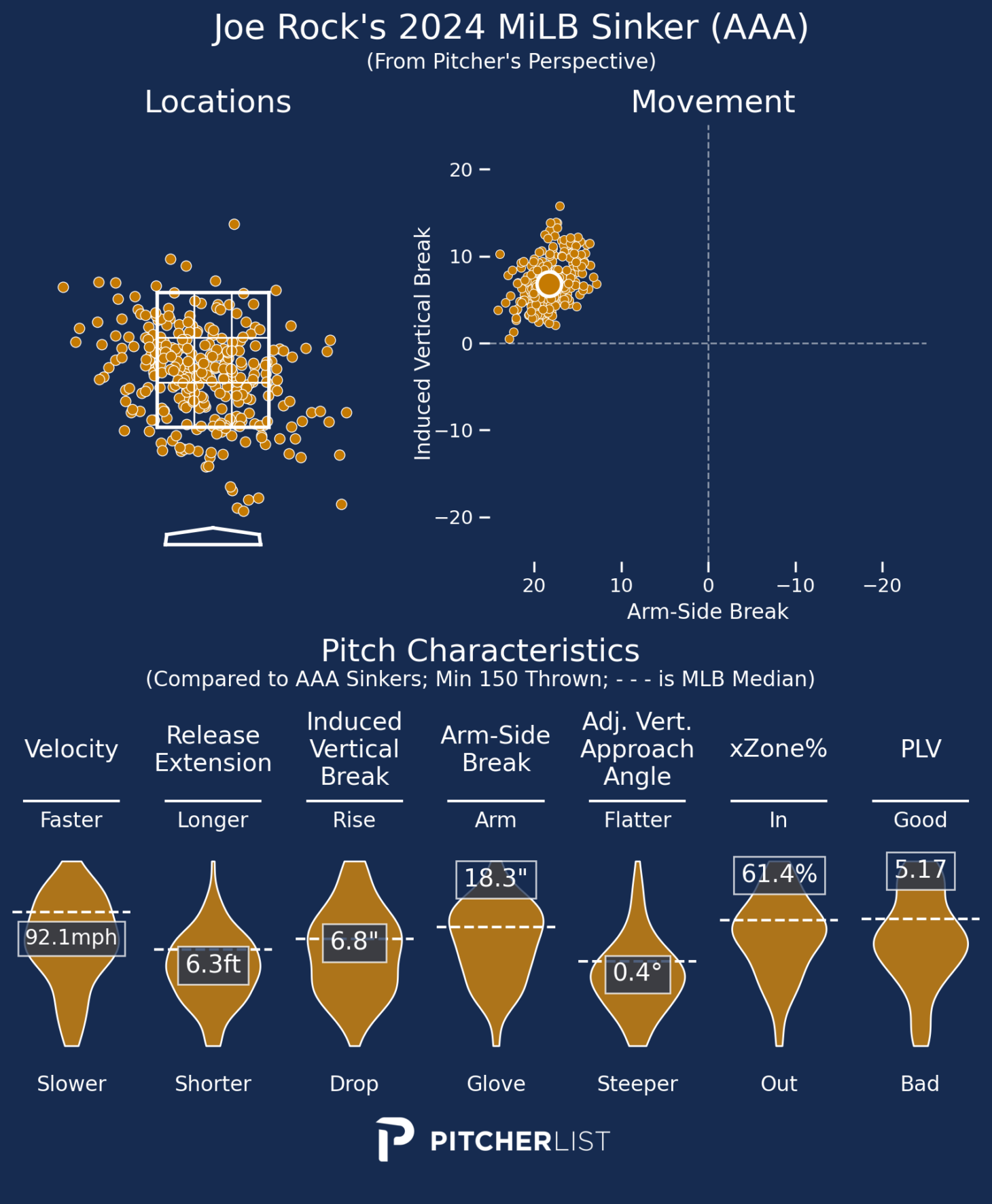
Rock’s calling card, like Woods Richardson above, is that he pounds the zone: his two best pitches are expected to be in the zone 60+% of the time. We’ll see if that strategy can be sustainable in the majors, but PLV thinks that he isn’t simply coasting by throwing strikes that minor-league hitters can’t deal with. He’s locating well, and letting the movement profile of his pitches do the work for him (since he won’t wow you with velo). Two plus fastballs, a tight Slider, and a Changeup that gets a ton of movement (18+” of horizontal break) make for a decent starter’s repertoire, and I hope the Rays call him up in the second half so we can see how it fares against big-league hitters.
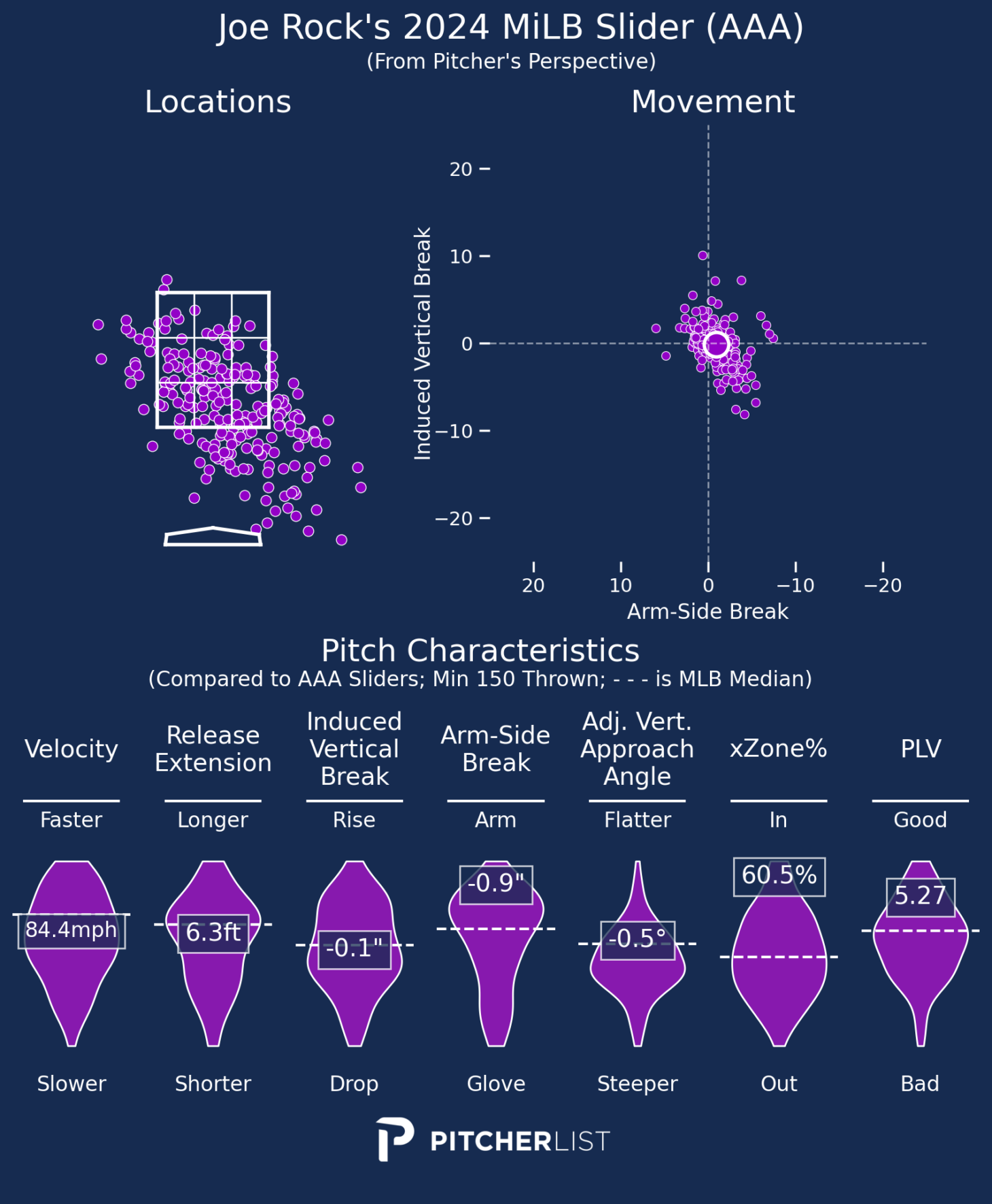
Crochet may be the biggest surprise on the entire list, as he’s “only” running a 3.16 ERA with underlying metrics that indicate it should be even lower. He’s bridging the traditional four-pitch starter’s mix (4-Seam/Changeup/Hard Breaker/Big, Slow Breaker) with the more current version (two functional Fastballs, Hard Offspeed, Sweeping Breaker).
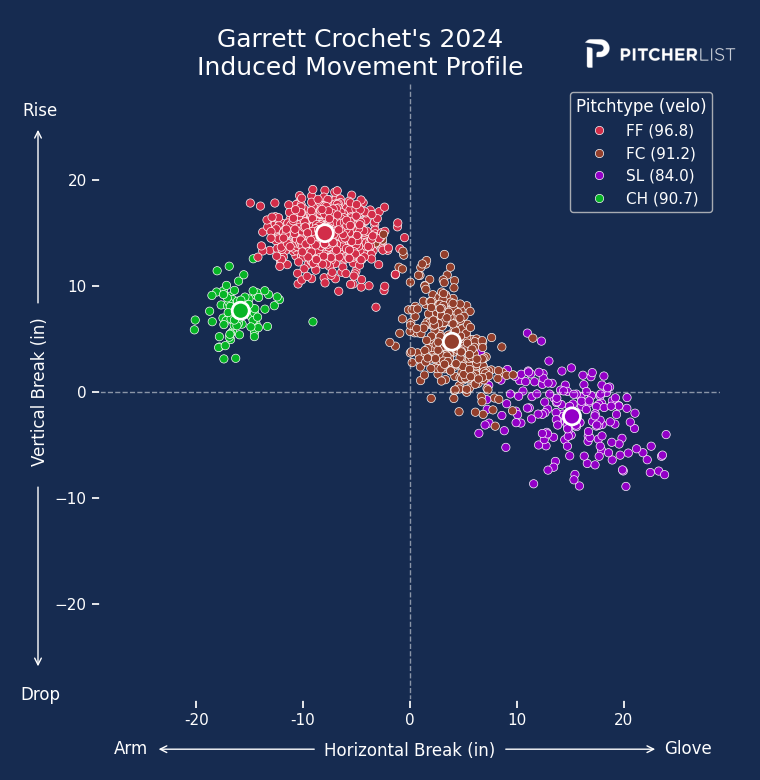
The star of the show is Crochet’s Cutter. It’s a pitch he locates exceptionally well (up-and-in to lefties, and down-and-in to righties), likely thanks to its strong gyro trajectory. Pitch misses tend to occur toward the direction of movement, so a gyro pitch has a little more leniency for missing, which allows pitchers like Crochet to spot it in locations around the zone more easily than pitches with bigger break profiles. Crochet’s pitches will always have plenty of raw underlying stuff because of very good velo (96.8 mph 4-Seam) and elite extension (7+ ft), but it’s how he’s using these pitches that has brought him success this season.

Weathers is another proponent of what I consider a more modern four-pitch mix (two Fastballs, Offspeed, Sweeping Breaker). The fastballs allow Weathers to attack opposite-handed hitters: he hammers the inside of the zone with his 4-Seam and the outside of the zone with his Sinker.
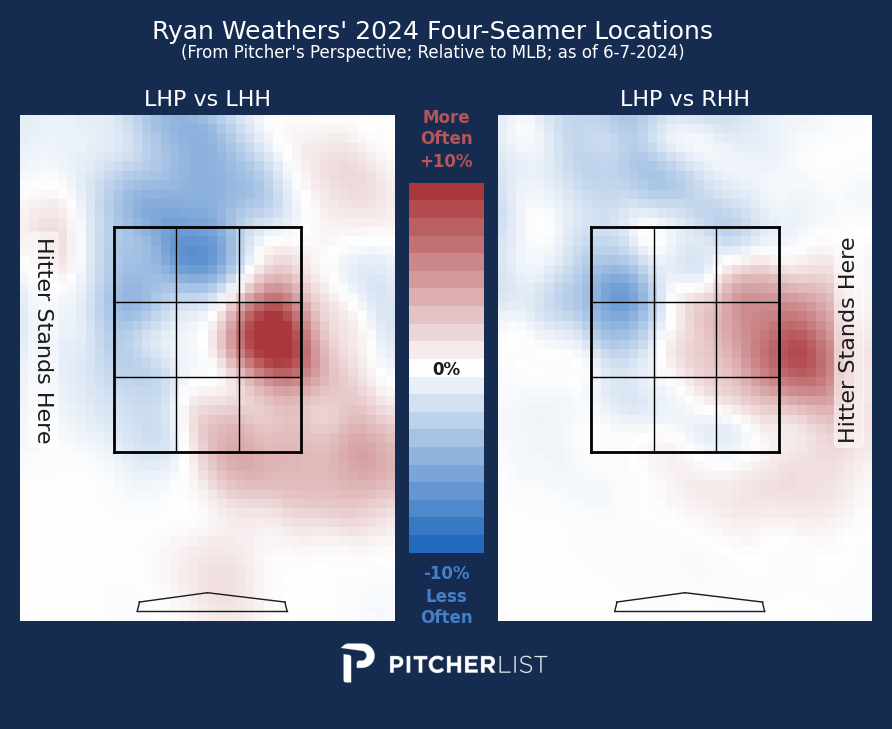
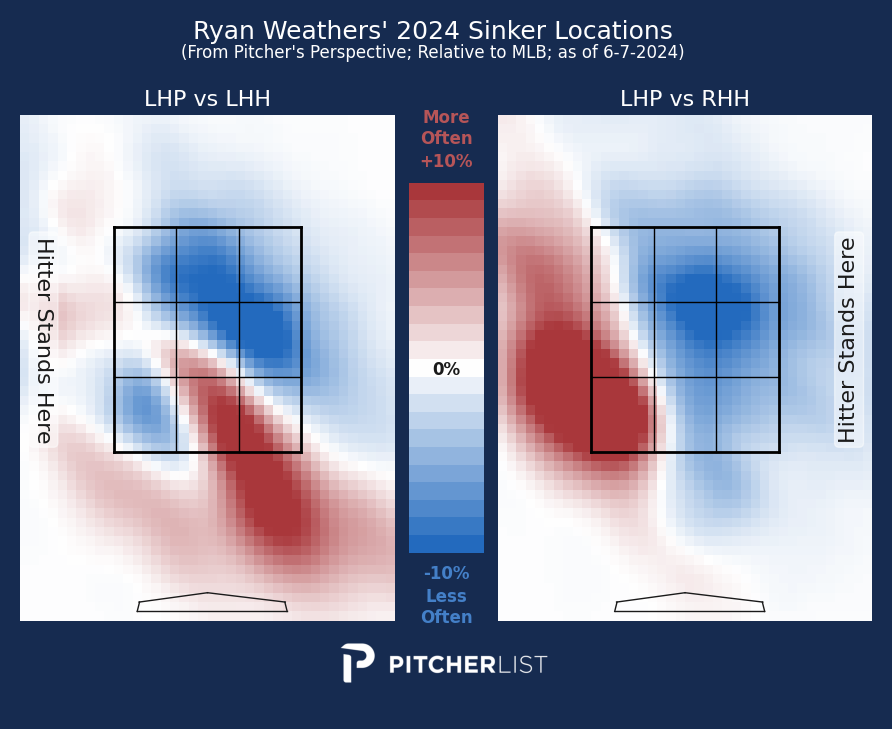
Even with all of the success he’s had this season, I still see room for improvement with his Sweeper. He simply can’t throw the pitch for strikes (31.1 Zone% and 51.5 Strike%, both worse than 20th percentile for Sweepers). If he can find any way to keep the pitch closer to the zone, it could unlock a new level for him, as it’s both the main reason he’s been so inefficient in pitch count (high Ball%) and the reason he needs to battle in so many plate appearances (68.5 Early%; 89th percentile).
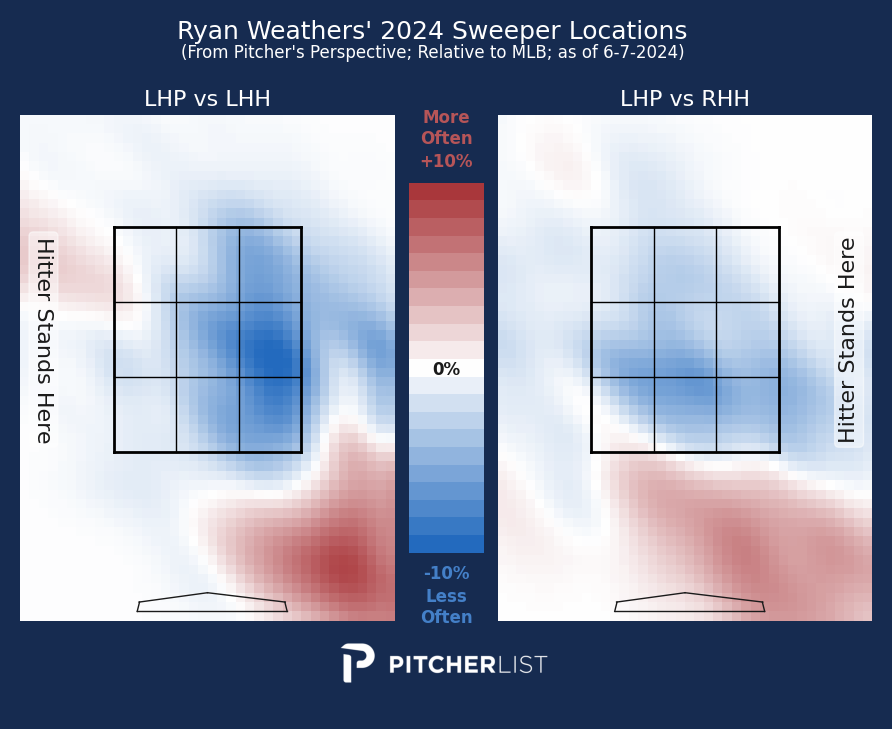
Fedde came back from his study abroad program in the KBO as a completely different pitcher. He picked up a Sweeper, a Changeup, and a revamped Cutter, all of which are helping him succeed with the Logan Webb East-West movement profile.
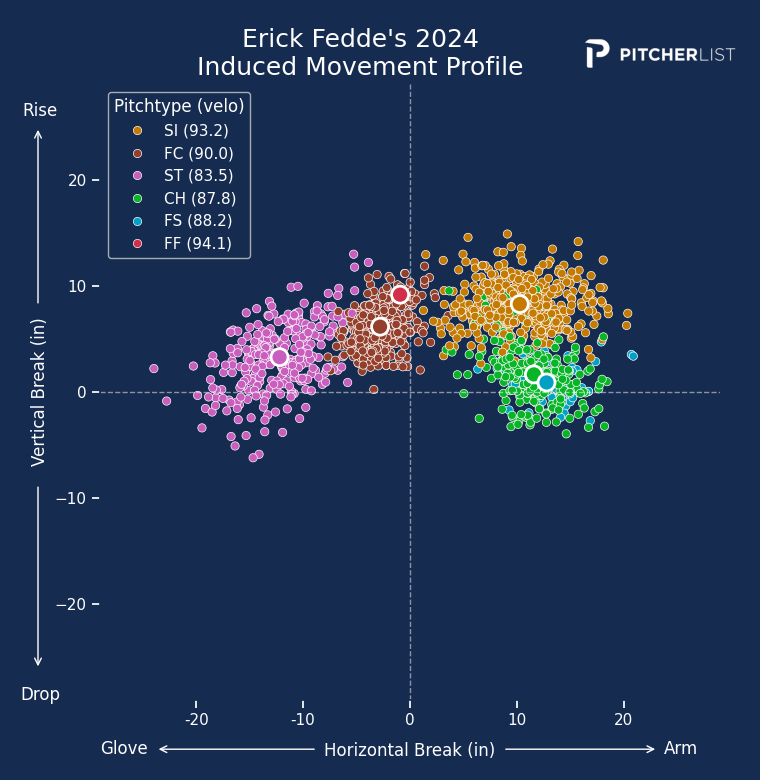
He does a particularly good job of weaponizing his Cutter. It’s a hard gyro Cutter, and he places it at the top of the zone against lefties and has it run away from same-handed hitters. This effectively complements his Sinker, which he locates similarly, but with a foot of break difference. That pairing has been flummoxing hitters all season, and he augments them with a Sweeper/Changeup combo that hitters can’t keep from flailing against (both pitches have a .265 xwOBAcon, which is over 100 points below the league average).
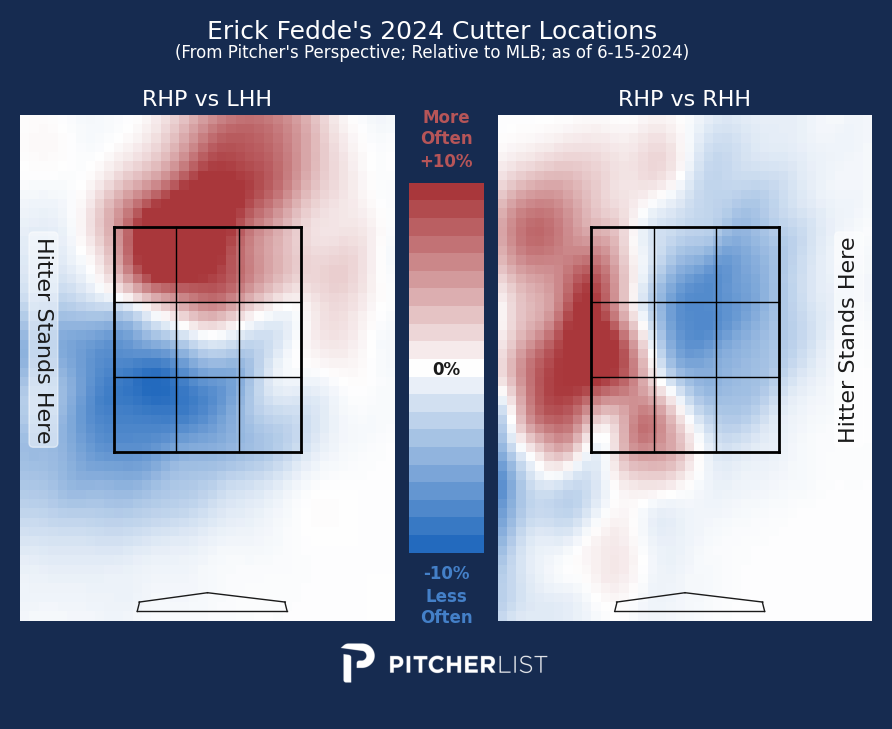
Fedde appears to be an extremely uncomfortable pitcher to face, and he’s been very effective at using that to his advantage. I love seeing atypical movement profiles work since baseball is more fun when there are more ways to be successful.
